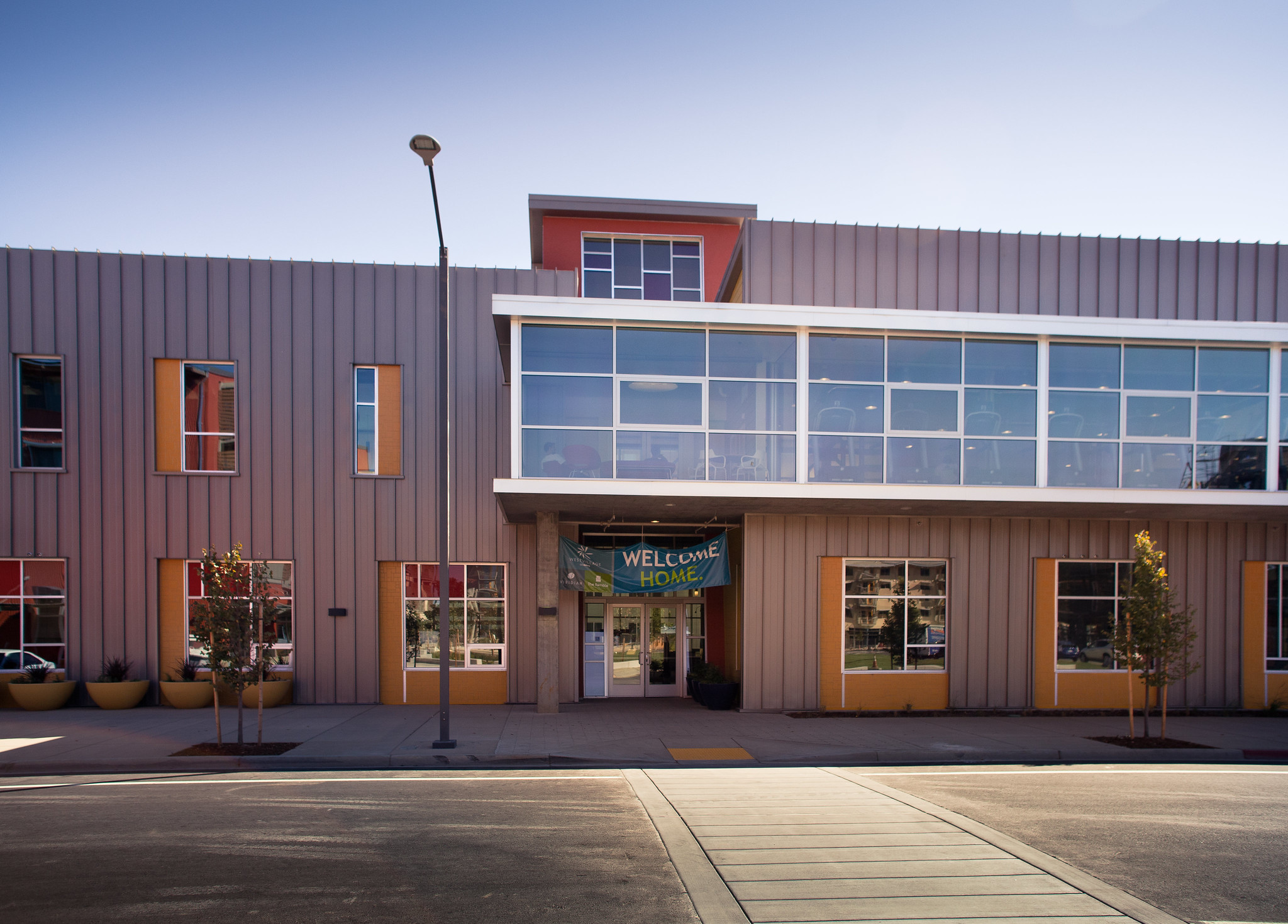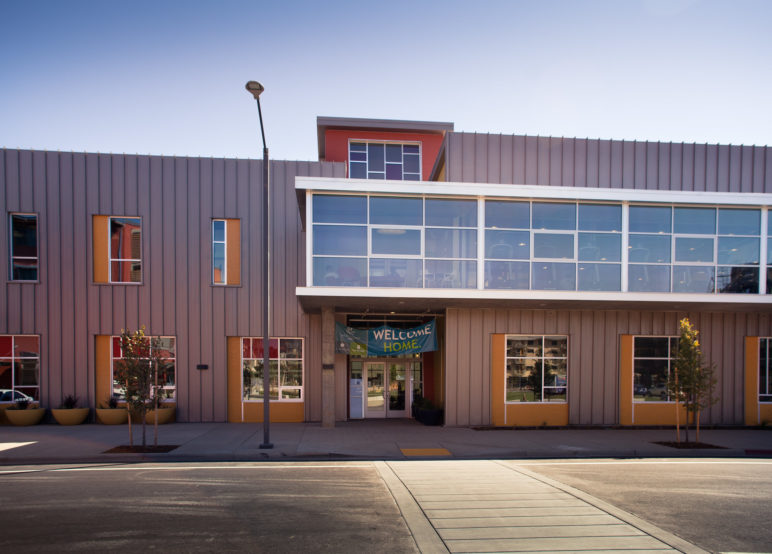To decarbonize the region’s buildings, Cascadians face no easy task. Natural gas heats 80 percent of the Pacific Northwest’s commercial buildings (by square footage) and 66 percent of its domestic hot water, according to the Northwest Energy Efficiency Alliance’s 2019 regional commercial building stock assessment. Yet if we aim to meet state climate targets, decarbonize we must, and it will require us to replace oil and gas with clean electricity for heating and cooling buildings, according to a study by the Clean Energy Transition Institute (CETI).
The key to success will almost certainly come from decarbonization’s dynamic duo: energy efficiency and electrification.

The key to success will almost certainly come from decarbonization’s dynamic duo: energy efficiency and electrification. Both CETI’s study and Washington’s 2021 State Energy Strategy find that these paired strategies offer by far the smallest price tag of all of the decarbonization options examined for buildings. Nonetheless, there are daunting upfront costs for investing in energy efficiency and converting gas-powered buildings to electricity. And building owners may see little upside to the costs since they won’t later reap the ongoing benefits of savings in the form of lower utility bills because their tenants are paying the energy bills.
To solve the upfront-cost problem, many states have laws enabling a financing tool known as C-PACER: Commercial Property Assessed Clean Energy and Resiliency. Oregon and Alaska have active C-PACER programs in Multnomah County and Anchorage respectively, and several counties in Washington are in the process of developing programs. By allowing loans for qualified clean energy and resiliency projects to attach to the property rather than the building owner, it can serve as a solution to the quandary of how to pay for the upfront costs of building decarbonization.
At least, that’s what C-PACER could do if Northwest state laws didn’t include a poison pill. As things stand now, the region cannot easily parlay C-PACER into an electrification supercharger because the current laws allow building owners to use C-PACER to buy new natural gas equipment. “Clean energy” is right in the title of the law, but somehow climate-polluting natural gas sneaked in. (And if you’re still thinking natural gas is a “cleaner” fossil fuel option, we can’t say it enough times: natural gas is just another source of dirty energy. In fact, it’s increasingly likely to be fracked, and its methane leakage problem makes it not much better than coal or oil when it comes to climate damage.)
We’ll dive into some strategies to make C-PACER a true supercharger for decarbonization and not a warped incentive to lock in more fossil fuel infrastructure, but first it’s helpful to understand a bit about how the tool works.
According to PACE Nation, an organization promoting property-assessed clean energy (PACE) financing, 38 states have PACE-type laws on the books. As of 2019, over 2500 commercial properties have accessed this type of funding, with more than $2 billion invested in improvements.
Unlike conventional commercial loans that have shorter terms and sizable down payments, C-PACER loans require no down payment and have terms that align with the lifespan of the improvements, such as 20-year loan repayment terms for high efficiency LED-lighting equipment with a useful life of 20 years. The arrangement frees building owners from the difficulty of coming up with cash for the up-front costs, removing barriers to making clean energy investments right away. Better yet, it also yields positive cash-flow: the monthly savings owners reap from efficiency improvements provide them with the funds to pay off their monthly loan installment, often with money left over that reduces energy bills for the occupants.
It’s a creative financing mechanism that Cascadian state leaders could design to work effectively to convert buildings from natural gas to electricity. But to make C-PACER actually function as this kind of decarbonization supercharger, the programs need four reforms:
- Reform 1: Limit “qualified improvements”
C-PACER programs are run at the county or city level, on the authority of state statute. In Washington, the law empowers counties to align C-PACER loan eligibility with county climate goals, providing counties in the Evergreen State with a quick and easy opportunity. Counties that have set goals for greenhouse gas reductions can restrict C-PACER qualifying improvements to exclude new equipment for fossil fuels like natural gas. King, Spokane, Thurston, and Whatcom counties are all preparing, or have recently adopted, C-PACER ordinances in 2021, while Clark and Pierce counties move forward at a slower pace. Of the bunch, only Clark and Spokane counties lack climate action plans on record. But all the others already have goals that would be consistent with restricting fossil fuel equipment from C-PACER financing.
For Oregon and Alaska, where state statutes for C-PACER provide no jurisdiction for locking out gas improvements, state lawmakers should consider adopting a Washington-style approach, providing leeway for local governments to restrict financing for fossil fuels. And of course, lawmakers in all three states could simply revise state statutes to restrict fossil fuel improvements under C-PACER, thereby creating a consistent approach statewide.
- Reform 2: Adopt companion laws
Given all the talk about climate leadership, it is surprising that leaders in the Northwest have not yet adopted laws in the form of energy codes, bans of natural gas, or similar strategies that would curtail ongoing investment in natural gas by fiat. In fact, no Cascadian state and only one local government restricts the use of gas in buildings. (Seattle’s new commercial energy code is the one exception.) Perhaps it goes without saying, but if laws restricted or eliminated the use of gas for space heating and water heating, C-PACER financing could more rapidly advance electrification goals.
- Reform 3: Align laws with state greenhouse gas emission goals
Oregon and Washington have committed to sharp reductions in greenhouse gas emissions by 2050—net-zero for Washington and an 80 percent reduction for Oregon. Achieving those reductions will require nearly all buildings to electrify and discontinue burning fossil fuels. C-PACER financing could be a powerful tool for financing all of these conversions, but the existing patchwork of laws, regulations, codes and incentives that are designed to nudge commercial building owners toward electrification has gaping holes—holes that allow (and in some cases actually encourage) investment in new natural gas equipment.
For example, Washington passed HB 1257 in 2019, which requires owners of large commercial buildings to raise their building’s energy performance to a specified standard. The law did not restrict the use of fossil fuels to meet these performance standards, but it should. If HB 1257 isn’t fixed, it is likely to drive new investments in gas equipment in large commercial buildings, perhaps financed by C-PACER loans. A new gas boiler purchased today is more efficient than its predecessors, but it is still carbon intensive and unnecessary. And, it is likely to outlive Washington’s 2050 net-zero deadline, thus leaving its owner with a “stranded asset” or jeopardizing the state’s climate commitments.
Lawmakers should button up these holes. (In a subsequent article, we will inventory some of the state laws that should be amended to box out gas.)
Four straightforward reforms could put real juice in the system—knocking down some of the biggest barriers to electrifying buildings and opening the door for a low-carbon future.

- Reform 4: Incentivize all-electric new construction
C-PACER is an attractive option for new buildings because it could help us to get it right the first time. New building energy systems and exterior envelopes can last for decades before replacements or improvements are even considered. In Oregon, the program rules allow developers to qualify for C-PACER financing if they achieve just a 5 percent boost in energy savings above energy code minimums. In Washington, developers need only exceed the energy code by any margin. Lawmakers in both states should strengthen C-PACER for new construction buildings with two requirements: they should be all-electric, and their energy performance should meaningfully exceed minimum codes, making them leaders in electric efficiency.
With C-PACER, the Northwest has a potential decarbonization supercharger, if only Cascadia’s lawmakers would put it to work. As these programs are constructed now, they may amount only to modest incentives for marginal efficiency gains. But four straightforward reforms could put real juice in the system—knocking down some of the biggest barriers to electrifying buildings and opening the door for a low-carbon future.












